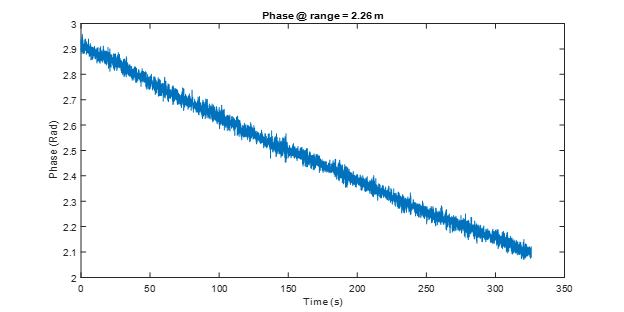Hi,
I recently was working with the phase of the received complex range profile by using vital sign demo. I realized that there is a decaying slope in the phase of the reflected signal. I try to run tests in an antenna chamber to see the phase slope for a target which does not move with respect to the radar. I captured the phase variation like below:
As I said, this is for a single stationary target. I would expect to get a noisy phase with almost zero mean but it is not like that. Do you have any idea why the phase decreasing very slowly? I guess it is because of the phase noise. Any idea?
Best,
Mostafa


